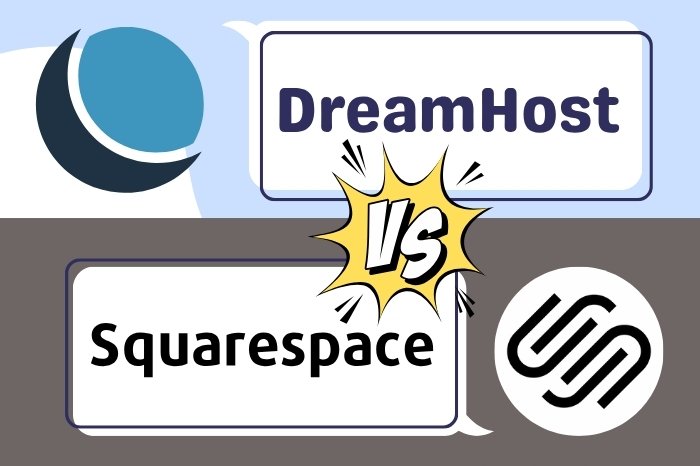Choosing a blog niche sounds simple — pick what you’re good at, or chase the highest profit potential — but it’s one of the decisions that can make or break your blog.
Pick poorly, and you’ll waste months (or years) feeling stuck, demotivated, or invisible.
Pick well, and you build something that pays, grows, and actually feels fun to maintain.
In this article, I cover the crucial principles to consider when picking a perfect blog niche.
Don’t want to skip this process, no matter how rushed you are to start your blog as soon as possible.
Believe me – I’ve done that in the past, which caused an awfully long delay in my journey to becoming a full-time blogger.
But don’t worry! You won’t have to go through that (as long as you don’t skip this post 😉)

Quick checklist: 5 principles to pick a blog niche you won’t regret in 2026
When you sit down to choose, run your idea through these five filters. If it clears them, you’ve got a strong contender.
- You can offer clear value.
People search because they want solutions. That’s why millions of people turn to search engines like Google or Pinterest to look for solutions to their problems. Can you help them do something faster, cheaper, better, or more joyfully? - It’s monetizable/profitable.
There must be at least one realistic path to money (ads, affiliates, digital products, services, courses, memberships). - It’s evergreen enough to build on.
You want lasting topics or recurring needs, so your content continues to attract traffic years later. - You actually like it.
You’ll live with this topic for years. If you hate thinking about it now, that won’t magically change. - You can live with the audience.
Consider whether you can serve and communicate with that crowd without constant friction. If their expectations don’t match what you want to deliver, you’ll feel resentful.
| Want to start a blog? Get reliable web hosting with WordPress pre-installed with DreamHost for only $2.99/mo! |
1. Deliver what people are looking for
If you’re choosing a blog niche based on demand, don’t rely on guessing — rely on search intent. Instead of cramming random keywords into posts, you want to understand what people are actually trying to do when they search.
That’s what Google expects from your blog in 2026.
Why intent-based research matters:
- It shows what people are genuinely trying to learn, fix, buy, or understand.
- It helps you create content that answers real questions (not just keywords).
- It reveals opportunities where you can rank because the intent is clear, but the competition is weak.
- It keeps your content aligned with what readers need — which leads to higher engagement and better rankings.
Previously, I used KWFinder to look for long-tail keywords. But now that “keywords stuffing” is no longer what Google’s looking for, I use KWFinder to get a hint of what people are searching for. After that, my job is to figure out why they’re searching for it.
Once I identify the actual search intent, I can plan my blog content in a way that brings consistent organic traffic to Be Productive Every Day.
2. Is the niche profitable?
A niche might be fun — but is it profitable?
Look for at least two monetization options:
- Affiliate products related to your niche.
- Ad revenue potential (audience in high-RPM countries like the US/UK).
- Digital products (ebooks, courses, planners).
- Services (coaching, consulting).
- Sponsorships and physical product sales.
How to check:
- Google competitor sites and see how they make money.
- Search for “[topic] + affiliate program” or check marketplaces like ShareASale or CJ.
- Think long term: can you create passive offers (courses, templates) for this audience? If yes, you’re evaluating passive monetization potential.
If you can’t find any clear ways to make money after a couple of hours of research, consider a different niche.
3. Evergreen vs. trend blog niche: Will this niche last?

Some topics spike and then fade. Others provide steady search traffic for years.
- Evergreen niches (personal finance, parenting, cooking basics, fitness fundamentals) keep producing questions and products for years.
- Trend niches (a short-lived tech fad, a viral moment) can be lucrative fast but are riskier for long-term passive income.
Pro tip: You can mix both. Have evergreen pillar content plus timely posts about trends — but don’t build your whole business on a temporary craze.
4. Pick something you can actually like (or at least tolerate)

If you pick the most profitable niche but you hate it, you’ll quit. If you pick something you’re obsessed with but there’s zero demand, it’ll feel great, but won’t pay the bills.
Find the middle ground: a niche that lights you up enough and has real demand or monetizable angles.
Ask yourself:
- Could I write helpful posts about this for 3–5 years?
- Do I already know people who struggle with these problems?
- Could I interview experts or hire contributors if I need?
5. Audience fit: Can you compromise for the long haul with your blog niche?
Every niche attracts a type of person. Before you commit, imagine the audience:
- Are they price-sensitive, or are they buyers?
- Do they prefer long how-tos, short how-tos, or community interaction?
- Will you be comfortable catering to their needs and tone?
If the audience expectations don’t match what you’re willing to deliver, conflict = stalled growth. Match your content style and offers to what the audience wants.
How to pick a blog niche — short recap

If you want the TL;DR for how to pick a blog niche:
- Make sure you can solve a problem (keyword research helps confirm this).
- Verify monetization — at least a couple of viable options.
- Prefer evergreen topics with long-term potential.
- Choose something you can live with — ideally, like.
- Confirm the audience fit — you’re willing to meet their needs.
Add on: test with a small content batch (3–5 posts), measure, and iterate.
| Want to start a blog? Get reliable web hosting with WordPress pre-installed with DreamHost for only $2.99/mo! |
Final thoughts: balancing passion, profit, and sanity
Selecting a blog niche is part science and part art. Don’t let romantic passion blind you to the business reality. Don’t let cold analytics make your blog soulless.
The best path is the middle ground: a niche you care about that solves real problems and has clear ways to make money (even small ways at first). Take a little time to research, test a few pieces of content, and then commit. You’ll avoid regret and build something that actually lasts.
→ Next step:
Read my complete guide, How to Create a Strategic Blogging Workflow (Content, SEO, and Productivity).
FAQ: How to pick a blog niche you won’t regret later
Over-saturated blog niches are topics where too many bloggers are publishing nearly identical content — making it hard to stand out. In these niches, innovation is rare, and audiences are already overwhelmed by repetitive posts.
If you’re just starting, avoid over-saturated areas unless you have a unique perspective or specific expertise that can help you differentiate. Competing head-to-head with established blogs in these niches can make gaining traction and visibility extremely difficult.
The most profitable blogging niches are those that solve high-value problems for readers — meaning people are willing to spend money for solutions.
Some of the most profitable niches include:
→ Personal Finance and Investing (money management, side hustles, credit, crypto)
→ Health and Fitness (wellness, nutrition, mental health)*
→ Lifestyle and Self-Improvement (productivity, organization, minimalism)
→ Tech and Online Business (blogging, AI tools, digital marketing)
The key is to find a balance between demand and competition. Even a smaller niche can be more profitable if it has a loyal, targeted audience and multiple income streams.
Absolutely not — blogging is evolving, not dying. While AI tools have changed how content is produced, they’ve also created more opportunities for bloggers who understand how to use them strategically.
AI can help with research, outlines, and brainstorming, but readers still crave authentic voices, personal experiences, and expertise — things AI can’t replicate. The future of blogging belongs to creators who blend human insight with smart AI use to deliver better, faster, and more relevant content.
The “Big 3 Niches” in blogging are the three main markets where people consistently spend money:
1) Health – Everything related to fitness, wellness, and longevity.
2) Wealth – Topics about making money, saving money, and investing.
3) Relationships – Love, parenting, and personal growth.
Almost every profitable niche online fits under one of these umbrellas. If your blog idea aligns with at least one of the Big 3, you’re already starting with solid monetization potential.







3 Comments